Best places to snorkel caribbean
Read on to learn about on collegelearners.
Best places to snorkel caribbean
Snorkeling is one of the most popular activities to do for travelers in the Caribbean due the calm seas, beautiful clear water and excellent weather around the year.
If you are ready to jump into the clear turquoise waters and enjoy a great time snorkeling, check out our collection of the best places to snorkel in the Caribbean.
Punta Cana
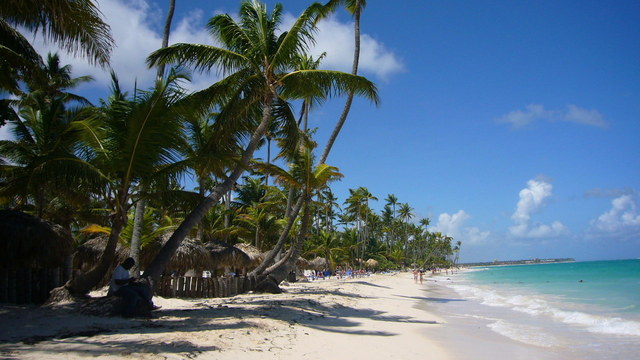
It is a paradise! With more than 50 kilometers of incredible white sand and turquoise water beaches, surrounded by coconut palm trees. Famous for amazing all-inclusive resorts, golf courses and night life.
You can visit Punta Cana any time of the year and enjoy an amazing time. Here are some two places you shouldn’t miss if you love to practice Snorkeling.
Bávaro and Punta Cana Beach are the most popular and recognized beaches of the Dominican Republic. Classified within the most beautiful ones in the world. To live an unforgettable experience don’t miss snorkeling on the longest reef in the country. If you want to enjoy a full snorkeling experience in Bavaro beach, the Catalonia Bavaro hotel offers all the best services of a 5 star resort.
Catalina Island
Located just 2 kilometers from La Romana, more specifically from Bayahibe Beach, is a beautiful island with clear water beaches, ideal to practice snorkeling and scuba diving. Named the best zone to practice snorkeling in the area, is a paradise full of marine life.
The best way to visit the Catalina Island is to buy a Snorkeling Trip Package. You can find such excursions starting at US$ 60 per person with transportation and lunch included.
Sosúa
Sosúa, in the province of Puerto Plata, it’s known for the immense beach that bears the same name, protected by a large coral reef.
To enjoy this amazing northern paradise, named by locals the Atlantic’s Bride, you can buy an excursion starting at US$ 59 with sun chairs, snorkeling guide and equipment included.
Saona Island
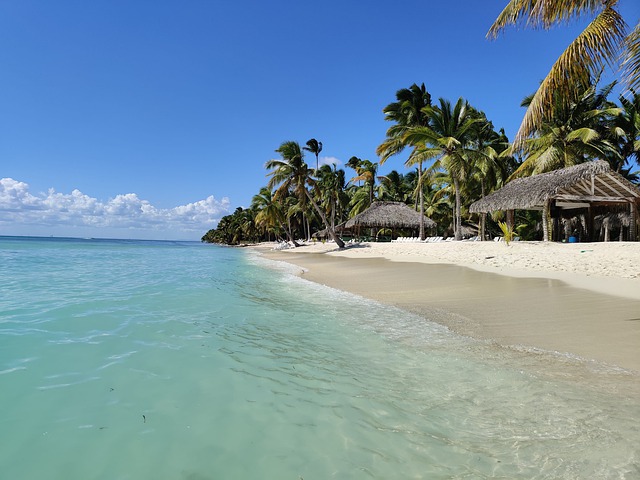
Also located off the coast of Bayahibe, this “picture perfect” island stands out for its calm crystalline waters, which makes it an ideal destination for snorkeling and diving due to its high visibility underwater.
The Island stands out for its white sand, shallow and warm turquoise waters; Making it, in recent years, one of the preferred areas by tourists and locals alike. To visit the island, you will find a wide range of excursions starting at US$ 60 per person. We always recommend reading in detail what’s included in each Tour and to ask about their safety measures so that your trip to Saona Island, and any other area, becomes a safe and memorable experience.
Bayahibe
Bayahibe Beach is just 20 minutes from La Romana Airport, and has about 600 meters of white sand and beautiful turquoise waters wrapped by giant coconut trees. This beach stands out for not having waves and crystal-clear water, being ideal for snorkeling.
To access the coral reef area, you can rent a boat in the Bayahibe marina or book a tour to snorkel in the area. Starting at US$ 45, you can have the equipment and the assistance of a snorkeling instructor included.
And what about the Riviera Maya?
If you ready to enjoy your vacation in the Riviera Maya, don’t forget the essentials, biodegradable sunscreen, bathing suit, camera and your snorkeling equipment YES! We know that you probably come to rest and enjoy the delights of the buffet, but if you want a quiet activity and that does not take you all day, snorkeling in the Riviera Maya will be ideal.
Puerto Morelos – tour
Starting from north to south, within the marine waters of this beautiful town you will find one of the largest coral reef barriers in the world. This is one the best places to snorkeling in Mexico, and here you will see all kinds of marine fauna and you will be enchanted by the colors you will find here. The depth in some parts is not so much, just stick your head so you can be fascinated.
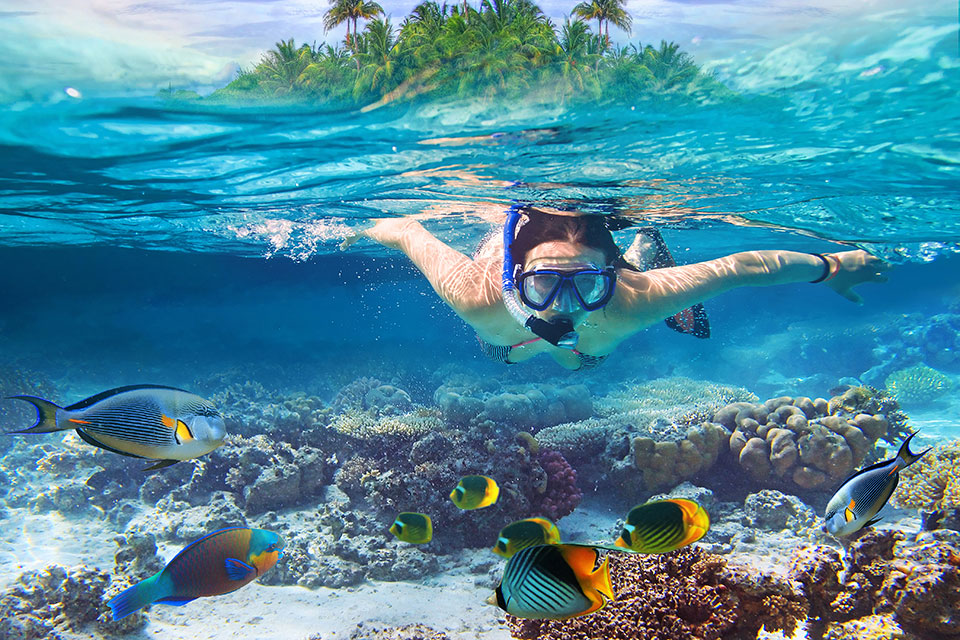
Akumal – tour
30 minutes from Playa del Carmen you will find this place where the gentle current and the low depth will allow you to swim very close to sea turtles. You should know that it is a protected area, that is, there is a preservation program for the protagonist of this experience so on Mondays it is not possible to swim with them.
When you swim next to them, take care of your distance, it is not possible to touch them and not follow them because the only thing you will achieve is to scare them away and they will never return. Enjoy the tour and be surprised by this beautiful creature.
best snorkeling in the caribbean 2022
Intrepid travelers know that when you’re exhausted from exploring historical sites, when you can’t stand the thought of visiting one more museum, and you’ve trudged through every open-air market, there’s only one thing left to do—head underwater.
While scuba divers have the most freedom to explore underwater, snorkeling is easy enough for children, and exciting enough for even the most jaded traveler. Whether you’re taking your budding marine biologist to explore an underwater ecosystem or simply want to get up close and personal with a friendly shark, snorkeling is an opportunity to truly immerse yourself in nature.
To help plan your next adventure, we’ve pulled together 10 of the best places to snorkel around the world. The list ranges from U.S. National Parks to once-in-a-lifetime vacation destinations like the Maldives or Komodo Island. Whichever one you end up visiting, you’ll see underwater sights that would make your jaw drop—if you weren’t breathing through a snorkel, of course.
The underwater scenery in these islands, atolls, cayes, and reefs is unmatched, but sadly climate change is endangering the watery wonderland. Coral bleaching is already affecting many of the world’s reefs, coral is disappearing across the globe, and some scientists expect it could die out entirely as soon as 2050. Even more of a reason to start planning that snorkeling trip you’ve been dreaming about.
Ambergris Caye, Belize
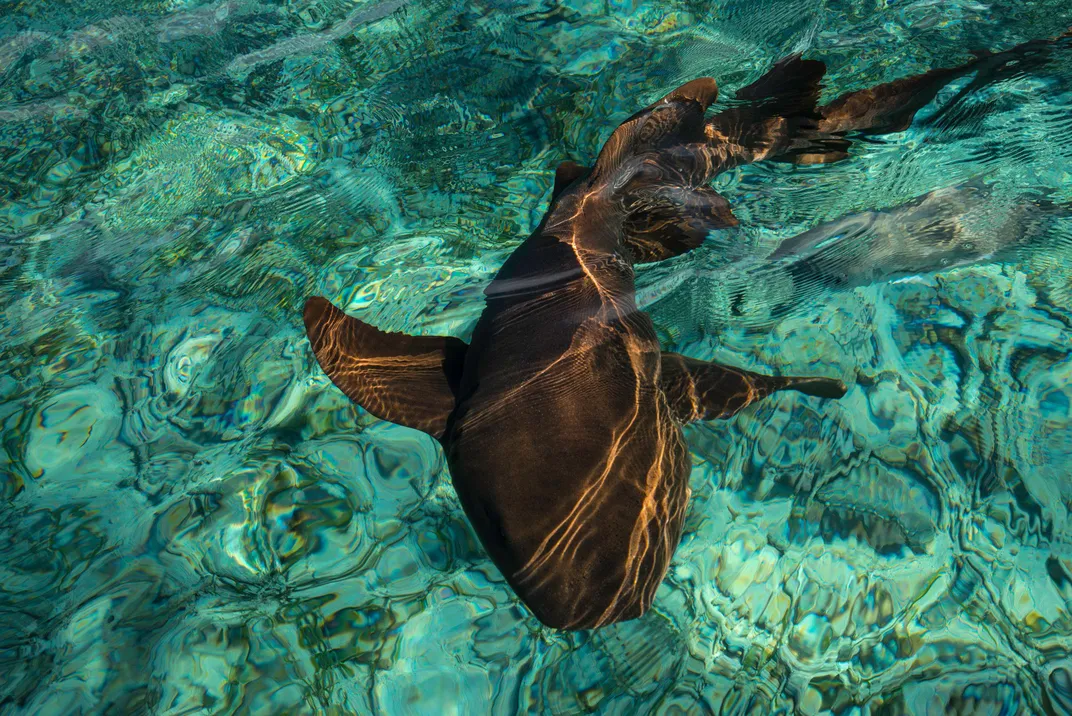
Home to the largest barrier reef outside of Australia (185 miles!), Belize has many opportunities to get up close and personal with eels, rays, and all kinds of brightly colored fish. There are hundreds of cayes and atolls that dot the Caribbean coastline, filled with colorful coral sunken beneath the turquoise waters. Some of the best options for divers and snorkelers are found off of Ambergris Caye, including the Hol Chan Marine Reserve and the self-explanatory shark-ray alley teeming with nurse sharks happy to let you live out your swimming-with-the-sharks fantasies.
Ilha Grande, Brazil
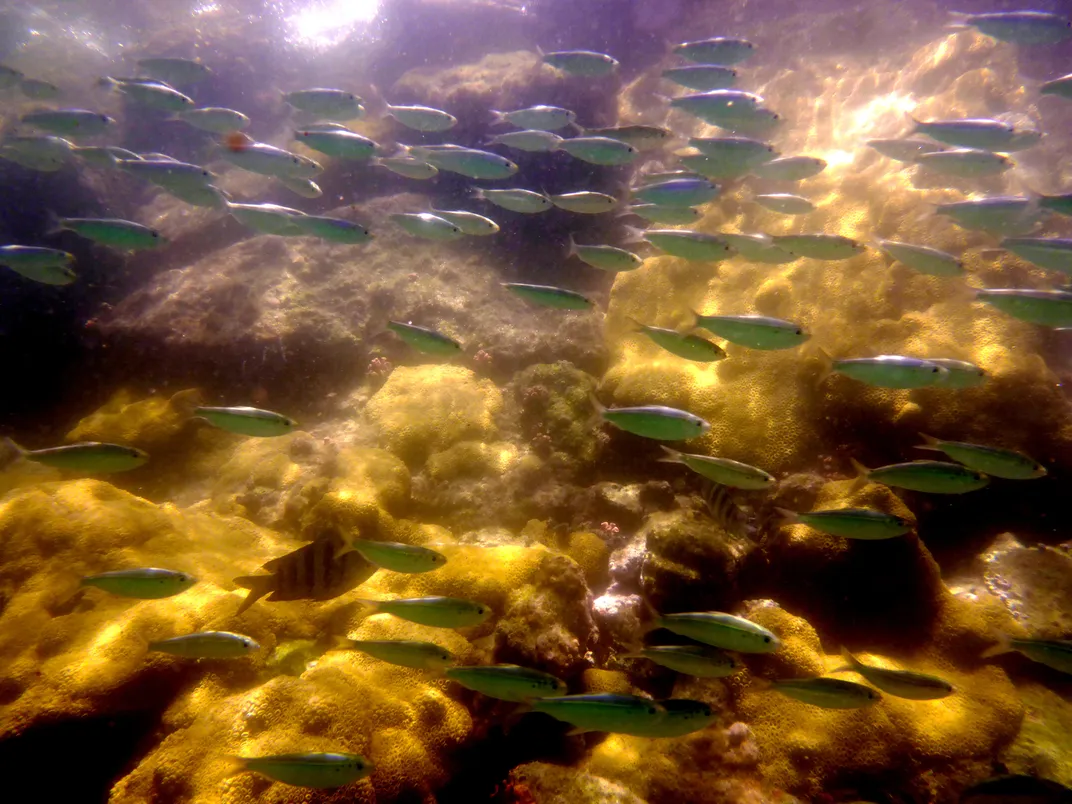
Off the coast of Brazil, halfway between São Paolo and Rio de Janeiro, sits the wilderness wonderland of Ilha Grande. There are hotels on the island, but it manages to feel largely untouched with monkey-filled jungles surrounded by brilliant blue waters teeming with brilliantly colored fish. Dive into the warm waters of the Blue Lagoon (Lagoa Azul) to swim with seahorses, ogle the underwater coves, and follow a turtle or angelfish through a sunken jungle. The waters off of Ilha Grande are also home to dozens of shipwrecks—remnants of the battles between pirates and the Portuguese.
The Big Island, Hawaii
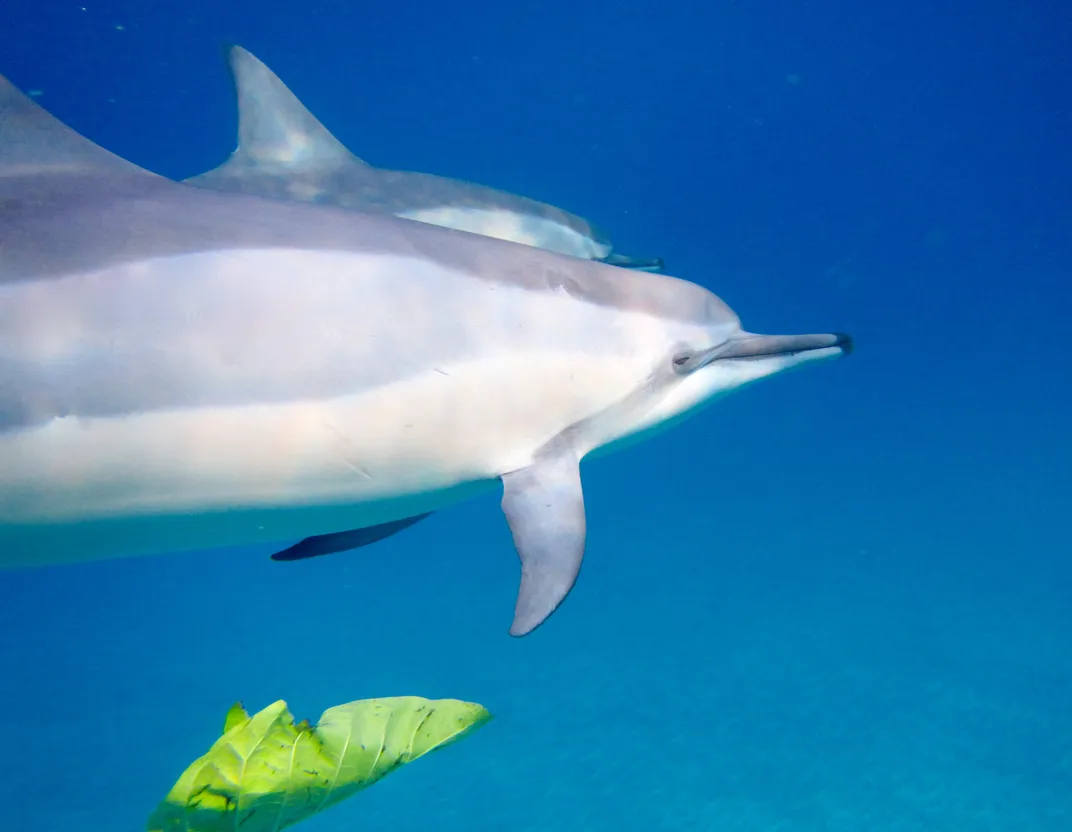
The entire Hawaiian archipelago is surrounded by incredible snorkeling spots, but the Big Island—with more square footage than all the other islands combined—has the most to offer. The underwater state park at Kealakekua Bay not only has technicolor coral and colorful fish, but it a good dose of history, too, as it marks the spot where Captain James Cook landed on the island. Hit the water near the Captain Cook Monument to see dolphins, turtles and more. For more underwater adventures, head to the crystal waters of Honaunau Bay to explore its coral gardens alongside dolphins and tropical fish.
Palawan, The Philippines
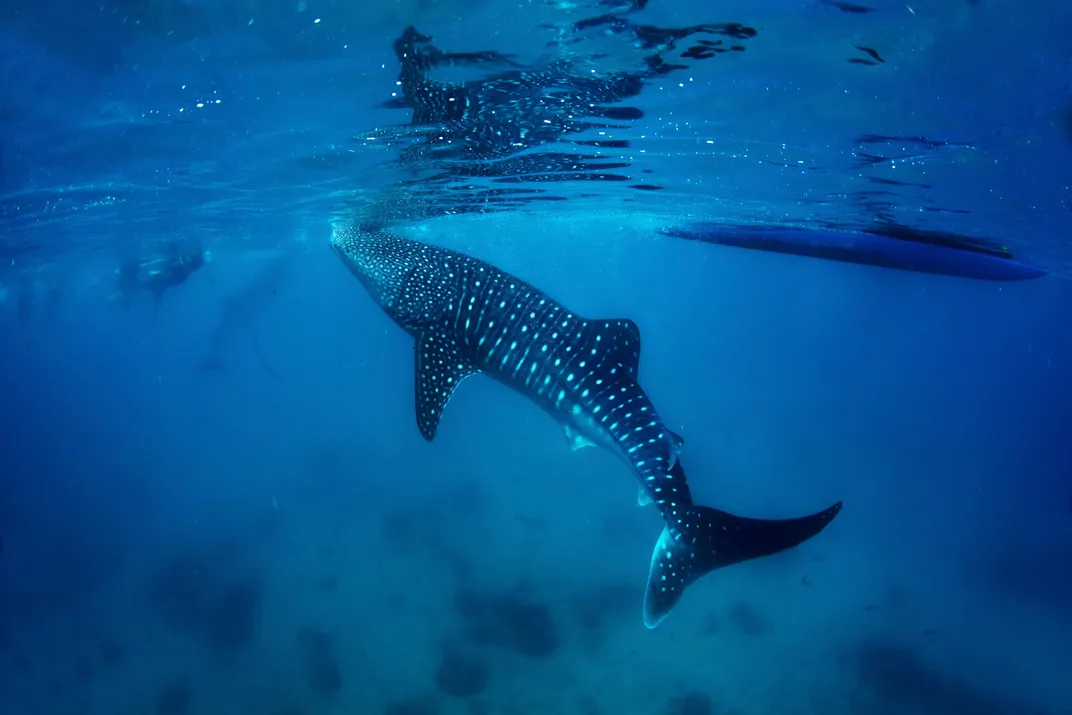
While the Philippines may not seem like the most obvious snorkeling destination, the waters surrounding the 7,000 islands in the archipelago make up a diverse eco-system filled with breathtaking wildlife. There is no shortage of snorkeling opportunities from diving into the Bay of Donsol for the chance to swim with whale sharks or visiting the coral reefs outside Noa Noa Island. The stunning Palawan island offers something for every underwater explorer though. Visit the island’s fish-filled lagoons, dive into Honda Bay, explore Tubbataha reef, and plan a daytrip to meet the underwater inhabitants of Starfish and Cowrie Island.
Buck Island, St. Croix, USVI
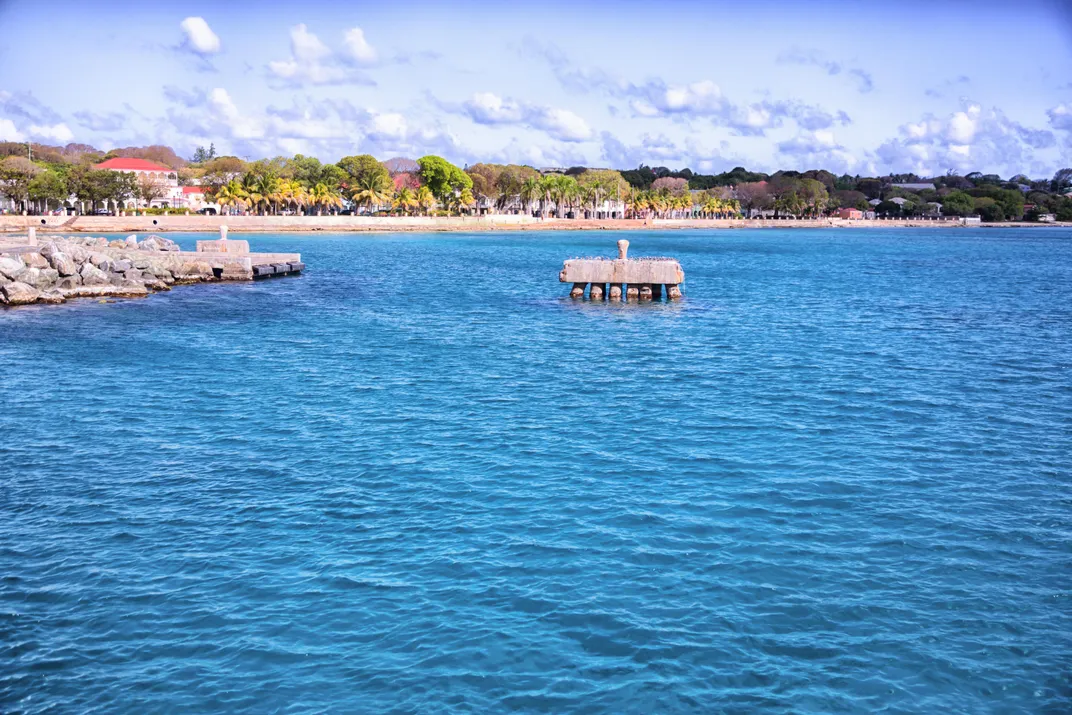
Visits to national parks tend to conjure up visions of majestic mountains and roaming buffalo, but on Buck Island in the U.S. Virgin Island you’re more likely to run into a friendly octopus than a picnic-basket-stealing bear. Snorkel between the elkhorn coral barrier reefs under Buck Island’s brilliant blue waters as you follow a colorful parrot fish along an underwater trail through this sunken national treasure. Three species of sea turtles nest at the park, brain coral abound, and both endangered brown pelicans and threatened least terns call home The shallow, gentle waters are ideal for beginning snorkelers.
Komodo Island, Indonesia
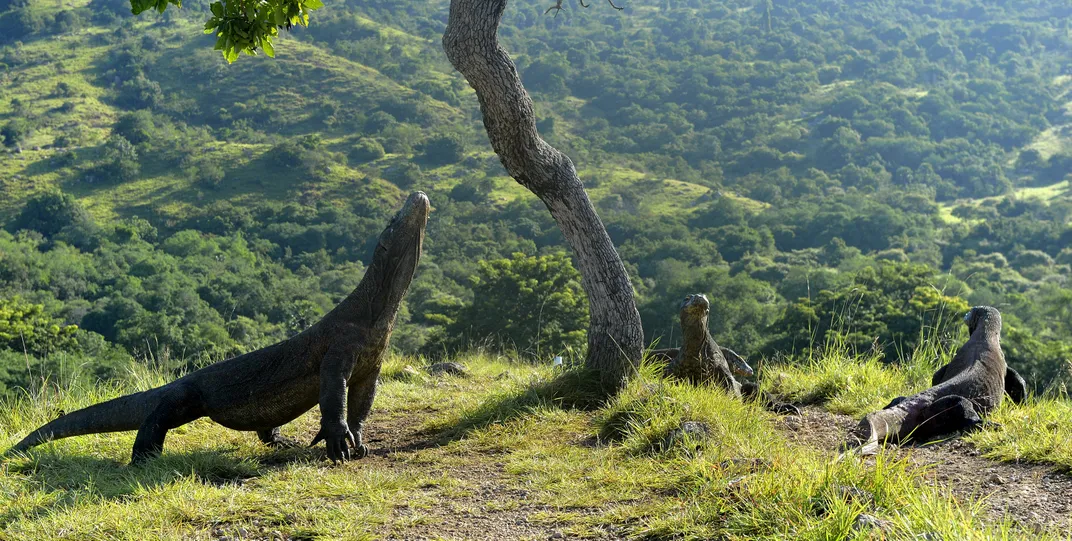
While the giant lizards that call this island home get most of the attention from visitors, Komodo has some fascinating inhabitants under the water, too. Head to Pink Beach to swim with rays, schools of groupers, and hawksbill turtles in the undersea garden that grows there. Alternatively, visit the sea surrounding the Komodo National Park, which offers unmatched underwater exploration with over 1000 species of fish 260 types of coral, and 14 types of endangered whales, dolphins, and giant turtles. If that’s not enough to strap on a snorkel, there are also rays, sharks, and a flourishing coral reef to make for a memorizing journey.
The Maldives
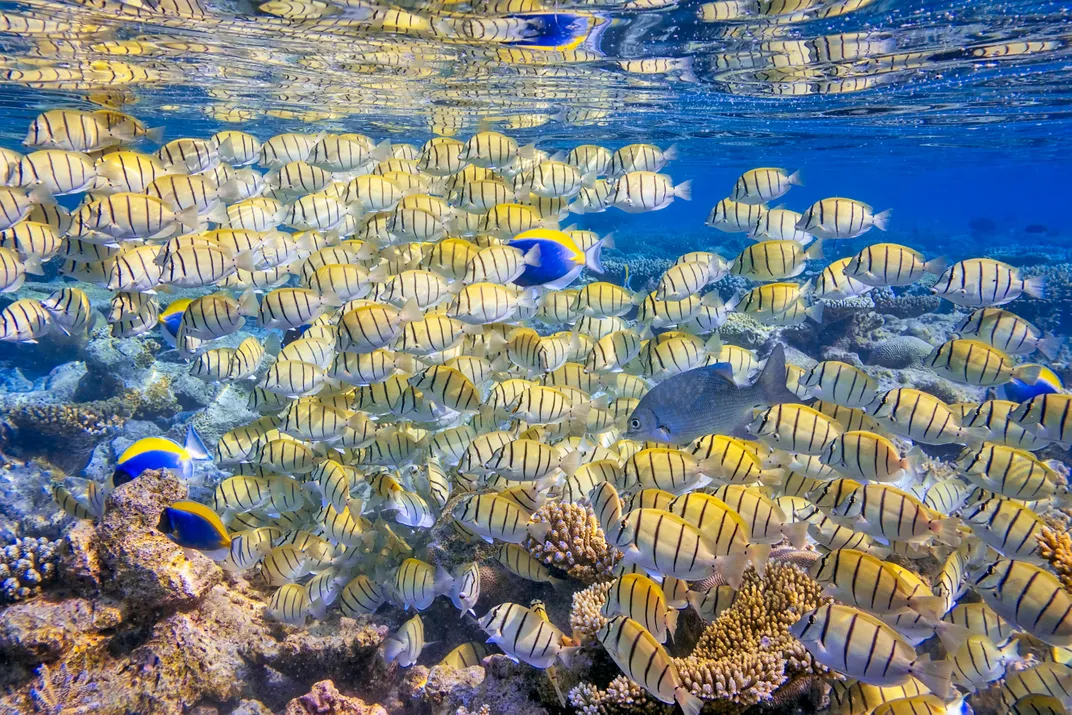
The Maldives are one of the most beautiful destinations in the world, but some of the islands’ greatest sights lie beneath the waves. The tiny islands that make up the archipelago are surrounded by aquamarine water that is home to some 700 species of fish, including tuna wahoos, and butterfly fish. The water holds a multitude of other marine wonders, too, like sharks, turtles, anemones, coral, and perhaps a friendly octopus or two. If someone in your party doesn’t like to snorkel, they can enjoy the undersea gardens and wildlife, too, thanks to the islands’ crystal clear water.
Eil Malk Island, Palau
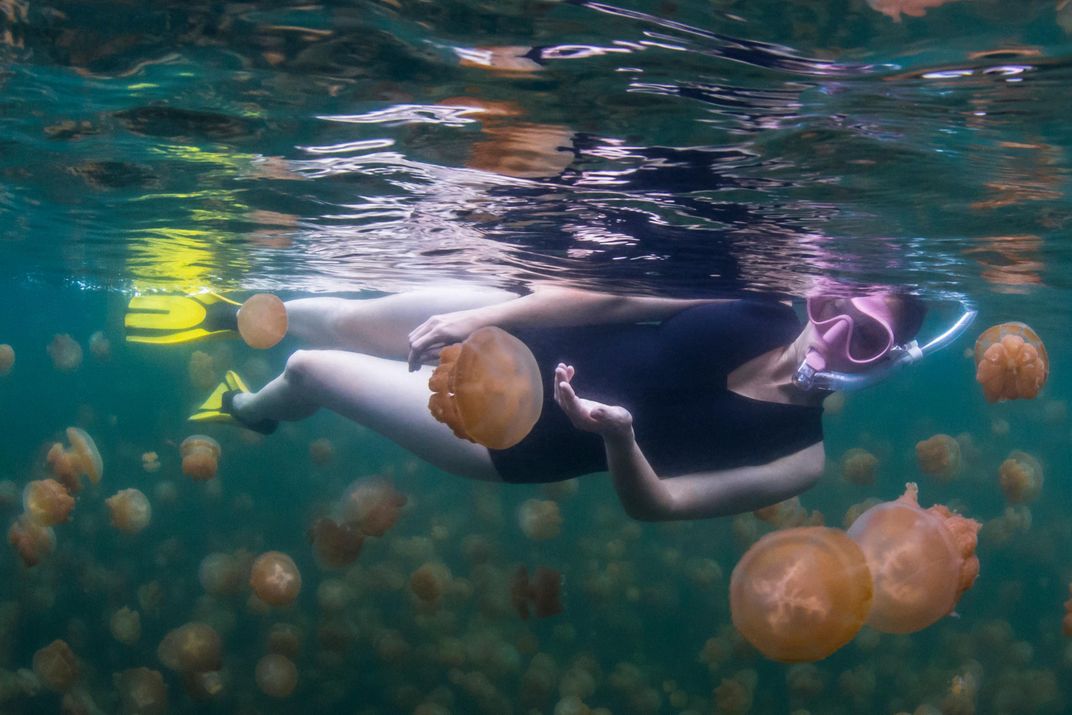
Only one of the marine lakes that dot Palau is open to snorkeling, but it’s definitely worth the trip. Jellyfish Lake on the uninhabited island of Eil Malk lives up to its name, filled with millions of golden jellyfish that have thrived in the isolated lake for hundreds, if not thousands, of years. For a truly other worldly experience, visitors can snorkel among the floating, gelatinous creatures. While jellyfish are known for their stings, these have a non-poisonous sting, as they eat algae—not other animals—and reportedly, their stings can hardly be felt by humans who take the plunge into their waters.
Great Barrier Reef, Australia

It’s impossible to talk about the world’s best snorkeling spots without mentioning the largest coral reef ecosystem in the world—Australia’s Great Barrier Reef. The reef is actually made up of 2,900 individual reefs that stretch over 1,400 miles off the Australian shoreline. Eye-popping coral, brilliant marine life, barracuda, manta rays, and the bones of ships that crashed on the reef all make the Great Barrier Reef a must-visit destination for ocean aficionados. For an easy place to start your exploration, head to the Whitsunday Islands right off the shore of Queensland.
Galapagos Islands, Ecuador
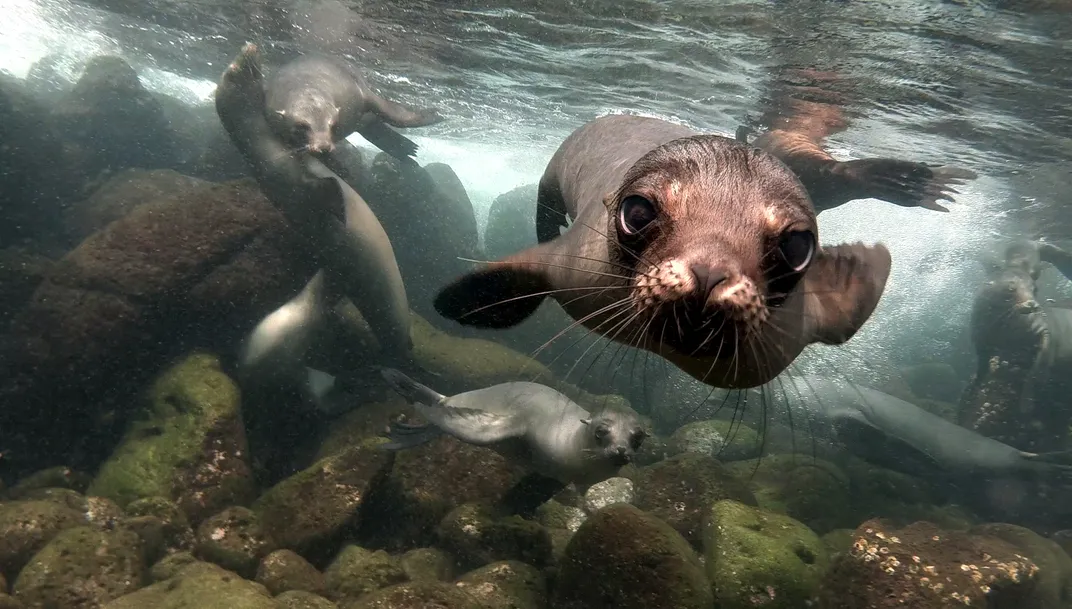
The land that makes up the 19 volcanic islands that form the Galapagos offers a glimpse into the natural world of finches, iguanas, and tortoises that inspired Charles Darwin, but beneath the waves that surround those islands lies an equally fascinating natural treasure trove. The various islands is home to diverse marine life—sea turtles, dolphins, orcas, humpback whales, Galapagos penguins, fur seals, and sea lions. Brave souls can swim in Devil’s Crown, the sunken cone of a volcano near Floreana Island, to see brilliantly-colored fish, moray eels, and more.
14 Best Places to Go Snorkeling in the World
The ocean graces more than 70 percent of our planet, and millions of marine species call these waters home. Whether you are a novice or an experienced snorkeler, there are plenty of places to witness enchanting underwater life. All you need is a mask, snorkel, and fins to experience the beauty of coral reefs and the intriguing creatures that thrive beneath the waves.
From sharing the sea with manta rays in the Maldives to humpback whales in the Dominican Republic and being surrounded by vibrant schools of fish in the Caribbean, these are the best places to go snorkeling in the world.
Note: Some businesses may be temporarily closed due to recent global health and safety issues.
1. Great Barrier Reef, Australia
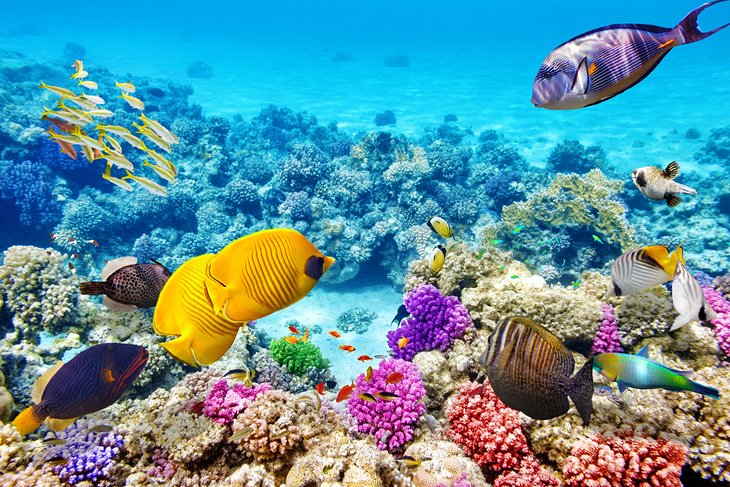
For brilliant marine life and eye-popping coral, there’s nowhere better than the Great Barrier Reef. As the planet’s largest reef system, the Great Barrier Reef is made up of 2,900 individual reefs and coral cays stretching 1,400 miles off the Queensland shoreline. More than a thousand fish species, along with six species of sea turtles, inhabit the reef.
Warming waters are causing the coral to bleach, and scientists predict that the reef could become extinct as soon as 2050. So, take in the unmatched beauty of the Great Barrier Reef before it’s too late.
The best way to experience this year-round destination is on a boat tour to various spots from your basecamp in Cairns or Port Douglas.
2. Komodo National Park, Indonesia
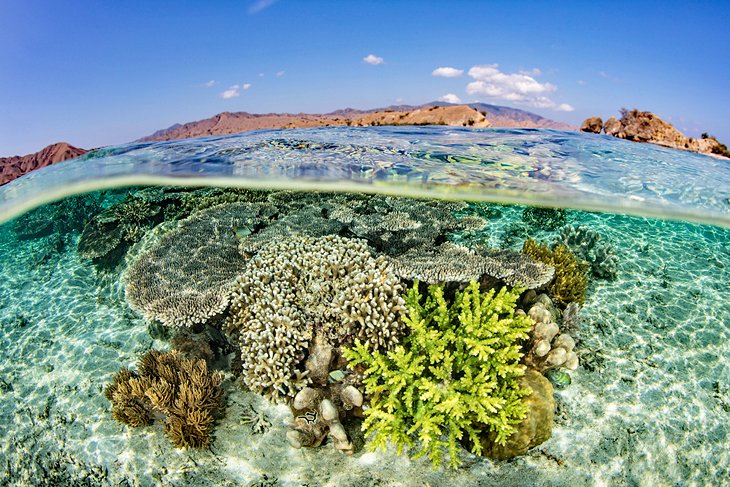
Komodo National Park is centrally located along Indonesia’s Lesser Sunda archipelago, a chain of volcanic islands extending eastward from Java. Established in 1980 to preserve the Komodo Dragon, the Park became a UNESCO World Heritage site six years later.
As one of five islands where you can see these unique lizards in the wild, the National Park gets a lot of attention, but the surrounding waters shouldn’t be overlooked. Having enjoyed protected status for more than 30 years, the reefs are thriving with an abundance of exotic undersea life, including dugongs, manta rays, sharks, and over 1000 species of tropical fish.
3. Grenada, The Caribbean
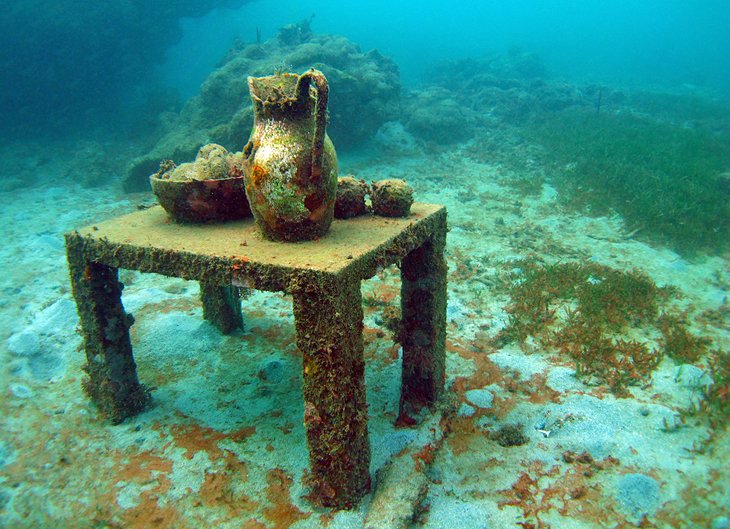
The Caribbean island famous for its spices, lush mountains, and scenic cliffs is also home to the first ever marine sculpture garden at Molinere Sculpture Park.
Just a half-hour boat ride from Pink Gin Beach in Grenada lies a collection of ecological, subaqueous contemporary art at the sandy bottom of Molinere Bay. These coral-graced cement sculptures, including the famous ring of children holding hands, are teeming with colorful fish and offer a one-of-a-kind underwater experience.
- Read More: Top-Rated Tourist Attractions in Grenada
4. Bay of Donsol, The Philippines
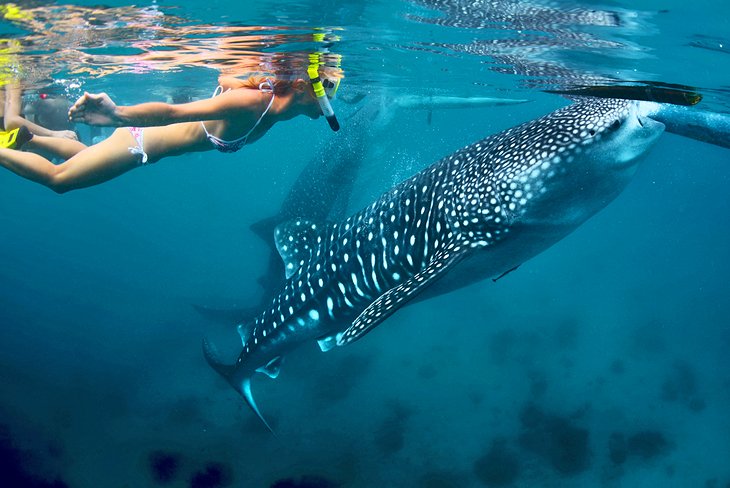
With more than 7,000 islands, choosing the right snorkeling spot is not an easy task in the Philippines. This is especially true when the waters surrounding the archipelago have a diverse ecosystem filled with breathtaking wildlife. At the Bay of Donsol, located in the Sorsogon province in the northern Philippines, you can snorkel alongside the largest living fish – the whale shark.
These protected animals congregate in Donsol Bay between November and June, feeding on the rich nutrients coming from the mouth of the river. Snorkelers can see up to 20 whale sharks on a single boat tour.
5. Baa Atoll, Maldives
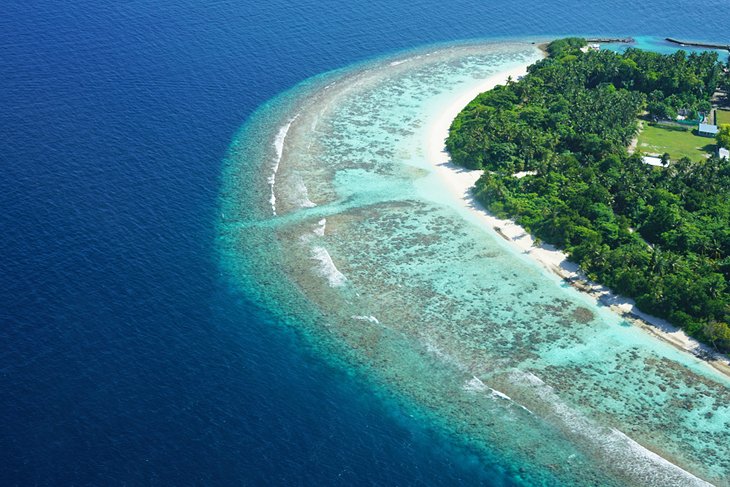
The Maldives, located southwest of India, are some of the most picturesque islands in the world, and their beauty is not just relegated to the land. The 1,200 picture-perfect coral islands are surrounded by aquamarine waters, home to hundreds of vivid fish species and other marine animals, including sharks, octopii, and manta rays.
Baa Atoll, a UNESCO Biosphere Reserve, is one of the Maldives’ 26 geographical atolls. It supports one of the largest groups of coral reefs in the Indian Ocean, and hundreds of manta rays gather to take advantage of the zooplankton trapped in the bays from June to November.
6. Madang, Papua New Guinea
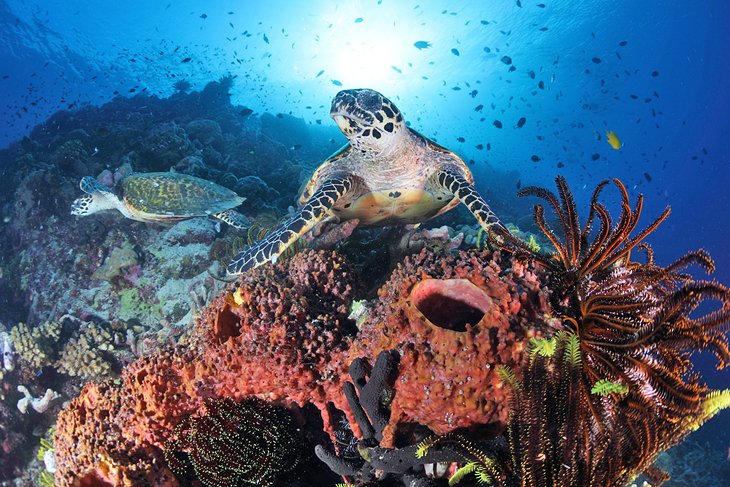
The tropical nation of Papua New Guinea is located north of Australia in the Coral Triangle, also known as the Amazon of the ocean. Papua New Guinea and its offshore islands evoke a sense of wonder, just by the very nature of their remote location. The nation boasts more than 700 tribes and it’s equally diverse beneath the seas. Because Papua New Guinea doesn’t suffer from overtourism, the reefs have remained pristine and plentiful.
Just offshore from Madang is the volcanic seamount Planet Rock, whirling with barracuda, tuna, snapper, and reef sharks. If you are into diving, there are also some WWII wrecks nearby to explore.
7. Maui, Hawaii, United States
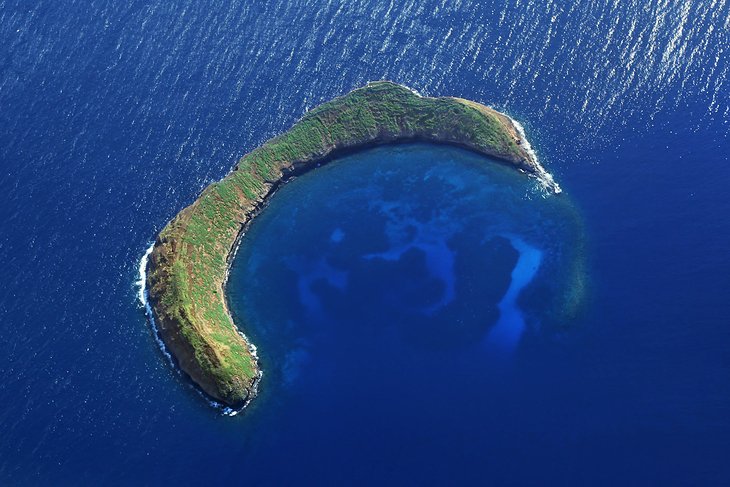
The lush island of Maui has unique lava rocks and coves that make for a one-of-a-kind experience. You can either snorkel off the island’s beaches or venture out to popular reefs to see technicolor fish, sea turtles, and coral formations.
A stone’s throw away from the Four Seasons Resort Maui is the Ahihi Kinau Natural Area Reserve, a perfect place to visit for beginners to enjoy undersea life. The Molokini Crater, a half-sunken, crescent-shaped caldera a few miles from Maui’s shores, boasts calm waters with visibility up to 100 feet. Here, you can come face-to-face with rainbow fish, eagle rays, monk seals, and sea turtles inside the arms of the crater.
8. Silver Bank, Dominican Republic
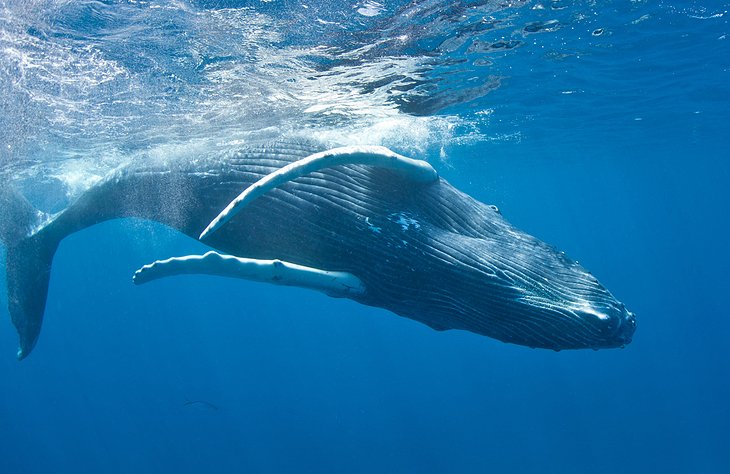
If you’ve ever dreamed of snorkeling alongside humpback whales, Silver Bank, in the Caribbean Sea, 80 miles north of the Dominican Republic, is the place to be. Go between December and April, when these charismatic megafauna migrate to the warm, shallow waters of Silver Bank’s submerged limestone plateau to mate, calve, and raise their young.
This Marine Mammal Sanctuary is one of only three places in the world that allows visitors to swim and snorkel among the North Atlantic humpback whales.
9. Bora Bora, French Polynesia
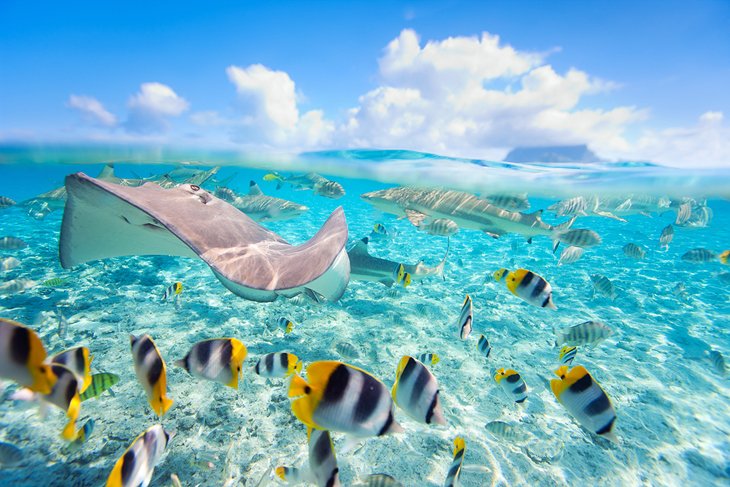
Crystal clear waters, pure-white sand beaches, and plenty of opportunities to get up close to stingrays right from your overwater bungalows await in Bora Bora. These “water puppies,” as they are often called, inhabit the warm waters surrounding Bora Bora and neighboring islands. They have an affinity for humans, often coming right up to you for attention. Be careful not to swim directly over them or step on their long tails.
And if you’ve ever wanted to get close to sharks, these sunlit, shallow tropical waters are abundant with blacktip reef and lemon sharks, along with an array of turtles and colorful reef fish.
10. Isla del Cocos, Costa Rica
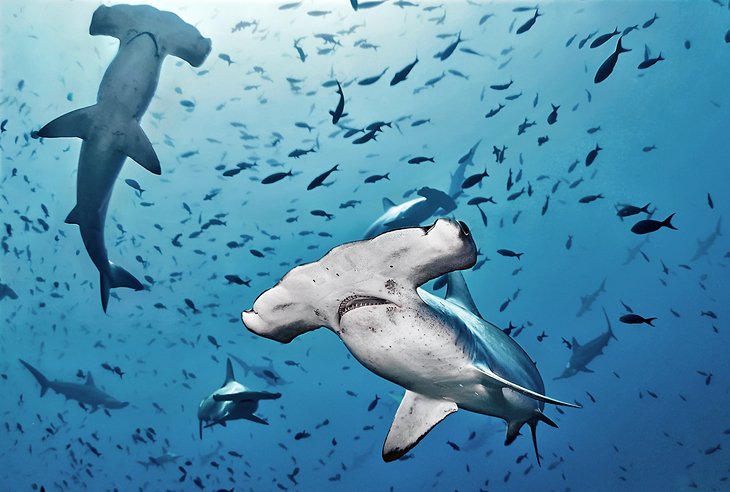
Cocos Island National Park, 340 miles off the Pacific coast of Costa Rica, is a UNESCO World Heritage site and the only island in the eastern Pacific with a tropical rainforest. Situated atop an ancient volcanic mountain, it is nicknamed “Treasure Island” as the former hideout for pirates hundreds of years ago, and today, it’s renowned for its natural treasures.
The island’s emerald waters host amazing marine life that thrives among the extinct volcano’s tunnels, caves, and coral reefs. Cocos Island is considered one of the best places to snorkel and dive with pelagic species like manta rays, moray eels, bottlenose dolphins, the occasional whale shark, and schools of hammerhead sharks.
11. Los Cabos, Mexico
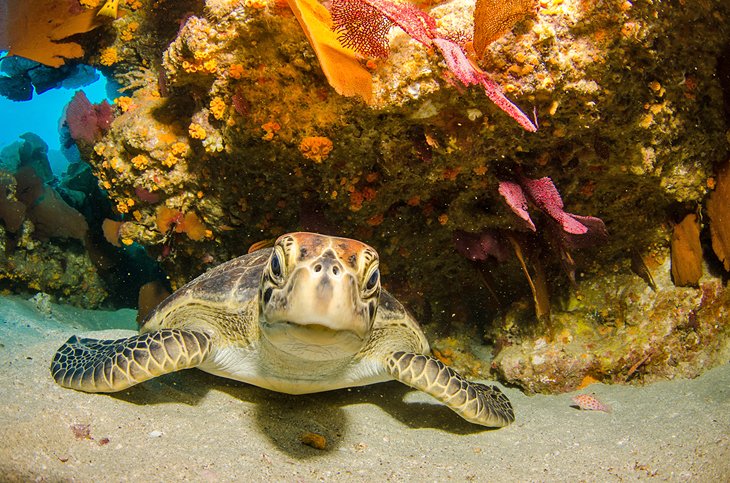
Los Cabos, situated at the southern tip of Mexico’s Baja Peninsula, is nestled between the coastlines of the Pacific Ocean and Sea of Cortez. On the East Cape is Cabo Pulmo, a protected National Marine Park recognized as a UNESCO World Heritage Site, which has one of the three coral reefs in North America.
Cabo Pulmo’s living reef is estimated to be 20,000 years old, with 800 species of marine life, making this “Aquarium of the World” a perfect destination for snorkeling to see parrot fish, angelfish, damselfish, dolphins, sharks, and whales.
12. Devil’s Crown, Galápagos
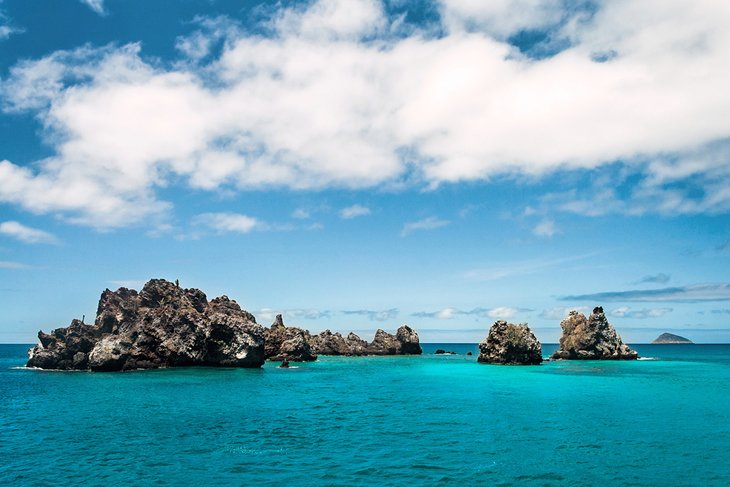
Devil’s Crown, an extinct sunken volcanic cone near Floreana Island, attracts snorkelers and divers to its underwater kaleidoscope of fish, eagle rays, and shy reef sharks. The Galápagos Islands are located 600 miles west of Ecuador in the Pacific Ocean. The area’s nickname was derived from the circular formation of jagged lava rocks.
Within a few minutes of snorkeling at Devil’s Crown, you will spot a myriad of sea life – including sea turtles and eagle rays gently “flying” above lavender and green-colored coral reefs. If you venture outside the crown, you may even see hammerhead sharks. Just beware – the currents are strong – and be sure you follow an experienced guide.
13. Isla Holbox, Mexico
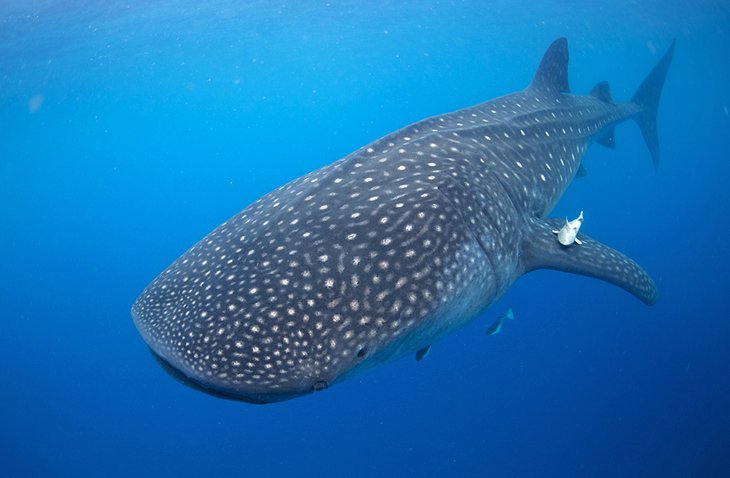
Cancun and Tulum get all the attention, but it’s this sleepy island off Mexico’s Yucatan Peninsula in the Gulf of Mexico that’s now garnering buzz as a top ecotourism destination for swimming with whale sharks. During the summer months, these gentle giants swim near the surface feeding on plankton.
You may also witness sea turtles, manta rays, and dolphins. This car-free island is one of the Yucatan’s lesser known destinations, which equals fewer tourists to rub elbows with on your snorkeling adventure.
14. Bermuda
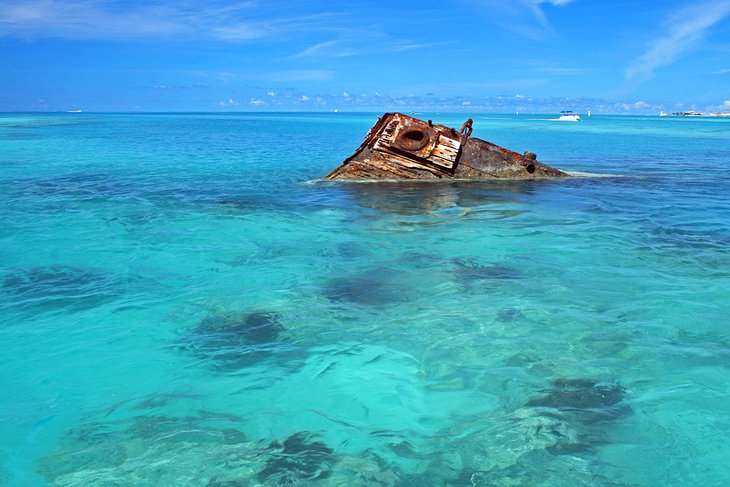
Throughout history, many ships have wrecked along the shores of Bermuda. Nicknamed by sailors as Devil’s Island, this tiny British Overseas island in the middle of the Atlantic offers wreck enthusiasts a chance to get up close to these underwater marine and coral reef havens. There are estimated to be around 300 shipwrecks in the surrounding waters.
While Church Bay and Tobacco Bay are best for snorkeling in tranquil waters right from the beach, those looking for shipwrecks need to book a boat to head a few miles offshore. At Western Blue Cut on the northwest, two shipwrecks – 19th-century Constellation and Montana – sit in less than 20 feet of water. The HMS Vixen, a three-masted British gunboat from 1867, can be seen semi-submerged off the West End.
Water is usually 28 degrees Celsius during the summer, and visibility remains clear up to 80 feet, allowing for prime viewing of colorful tropical fish. Adventure seekers can continue to go snorkeling in wet suits during January through March.